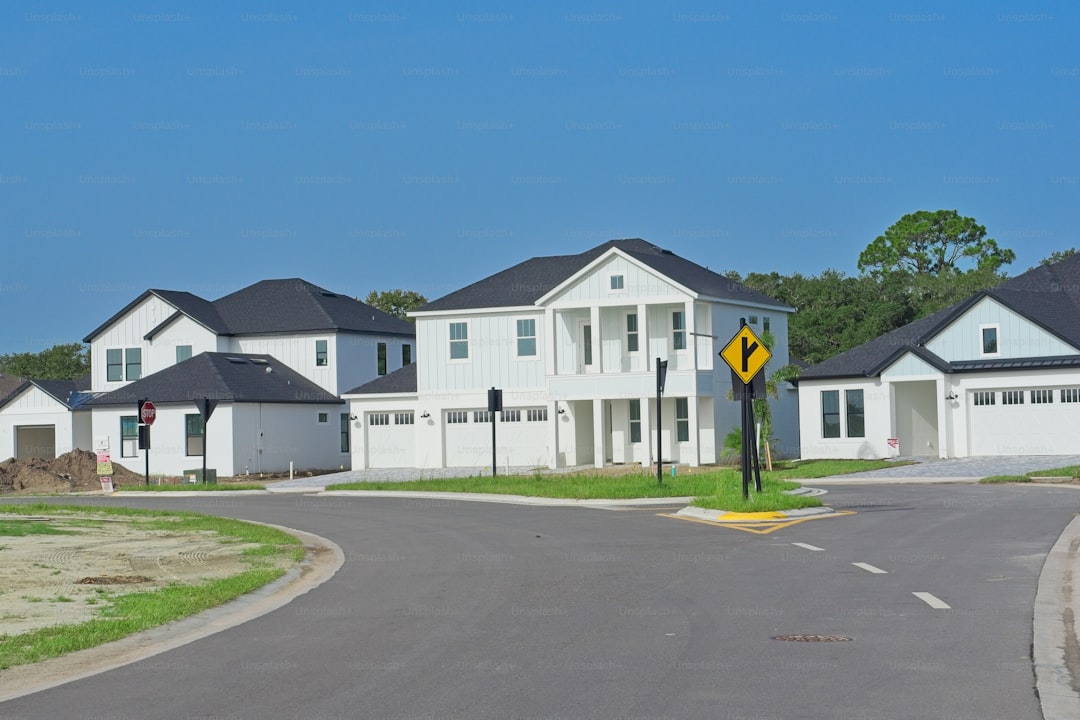How to Choose the Perfect City for Your Nomadic Lifestyle

Why the Right City Matters for a Nomadic Lifestyle
Choosing a city is more than picking a spot on a map. It determines how smoothly you can work, how safely you can live, and how much you will enjoy the cultural experience. A city that feels vibrant, affordable, and well‑connected can turn a temporary stay into a period of personal growth and professional productivity. Conversely, a location with spotty internet, high expenses, or a language barrier can quickly become a source of stress. The goal of this guide is to give you a clear, step‑by‑step process for evaluating potential destinations so you can land in a place that supports both your work and your desire to explore.
Define Your Nomadic Priorities
Before you open a spreadsheet or start scrolling through Instagram feeds, take a moment to write down the factors that matter most to you. Priorities differ from one traveler to the next, and a structured list will keep your research focused.
- Work requirements – bandwidth, coworking spaces, time‑zone compatibility with clients or teammates.
- Budget constraints – total monthly cost, including rent, food, transport, and leisure.
- Safety and health – crime rates, quality of medical services, availability of insurance.
- Community vibe – presence of other digital nomads, networking events, language accessibility.
- Lifestyle preferences – climate, outdoor activities, cultural events, nightlife.
- Legal considerations – visa options, length of stay permits, tax implications.
Write these priorities in order of importance. When you later compare cities, you’ll be able to see which locations align best with your personal hierarchy.
Research Tools and Resources
A reliable research toolkit saves time and helps you avoid misinformation. Below are the most useful resources for each priority area.
| Priority | Tool / Source | What It Provides |
|---|---|---|
| Cost of living | Numbeo, Expatistan, local expat forums | Average rent, groceries, utilities, dining out |
| Internet speed | Speedtest.net, Nomad List, local ISP websites | Average download/upload speeds, reliability |
| Safety | Global Peace Index, government travel advisories, local police statistics | Crime rates, safety rankings |
| Visa information | Official government immigration sites, Nomad Visa databases, forums like Reddit r/digitalnomad | Types of visas, eligibility, application process |
| Community | Meetup, Facebook groups, coworking space newsletters | Event calendars, member reviews, size of nomad community |
| Health care | WHO country health profiles, local hospital rankings, insurance provider networks | Quality of hospitals, cost of medical services |
| Transportation | Google Maps transit layer, city transport authority sites, local blog posts | Public transit coverage, bike lanes, ride‑share availability |
| Climate | Climate‑Data.org, Weather.com historical data | Average temperatures, rainfall, seasonal extremes |
Bookmark these sites and create a simple spreadsheet where you can paste key data points for each city you are evaluating.
Step‑by‑Step Evaluation Process
Step 1 – Shortlist Potential Cities
Start with a broad list based on known digital nomad hotspots, personal recommendations, or curiosity about a region. Aim for 8‑12 cities at this stage. Include a mix of well‑known hubs (e.g., Lisbon, Bali) and off‑the‑radar options (e.g., Plovdiv, Medellín) to keep your choices diverse.
Step 2 – Gather Core Data
For each city, fill in the following columns in your spreadsheet:
- Average monthly rent for a one‑bedroom apartment in a safe neighbourhood
- Estimated monthly food cost (groceries + occasional dining out)
- Average internet speed and cost of a reliable plan
- Visa type available for remote workers and maximum stay length
- Safety score (e.g., from Global Peace Index)
- Number of coworking spaces and average membership price
- Presence of an English‑speaking community (yes/no, size estimate)
- Climate summary (temperature range, rainy season)
Use the research tools listed earlier to ensure data is recent (preferably within the last 12 months).
Step 3 – Score Each City Against Your Priorities
Assign a weight to each priority based on the hierarchy you created earlier. For example, if internet speed is your top priority, give it a weight of 30 %. If community vibe is less critical, give it 10 %. Then rate each city on a 1‑5 scale for each factor and calculate a weighted total score.
Example weighting (adjust to fit your own preferences):
- Internet speed – 30 %
- Cost of living – 25 %
- Visa flexibility – 15 %
- Safety – 10 %
- Community – 10 %
- Climate – 5 %
- Health care – 5 %
Multiply each rating by its weight and sum the results. The city with the highest total is the most aligned with your personal needs.
Step 4 – Dive Deeper Into the Top Candidates
Now that you have a shortlist of 2‑4 cities with strong scores, it’s time to explore the nuances that numbers can’t capture.
- Read recent blog posts from nomads who have lived there for at least three months. Look for comments about hidden costs, internet outages, or bureaucratic hurdles.
- Join local Facebook or Slack groups and ask current residents about their day‑to‑day experience.
- Check time‑zone overlap with your main clients or team. A city that is too far ahead or behind may require odd working hours.
- Watch YouTube vlogs that showcase daily life, street scenes, and coworking environments. Visual cues help you gauge whether you’ll feel comfortable.
Take notes on any red flags or pleasant surprises that emerge.
Step 5 – Test the Waters
If possible, arrange a short trial visit before committing to a longer stay. A week‑long “research trip” allows you to:
- Verify internet reliability by working from a café or coworking space.
- Test public transport routes between your accommodation, work hub, and leisure spots.
- Experience the local food scene and assess grocery prices.
- Interact with the expat community in person.
Even a brief stay can reveal practical challenges that data alone might miss.
Step 6 – Make the Decision
After completing the trial visit, revisit your weighted scores and personal impressions. Consider both the quantitative fit and the emotional resonance you felt. Choose the city that offers the best balance of practical feasibility and personal excitement.
Key Factors Explained in Detail
Cost of Living
A realistic budget is the foundation of any nomadic plan. Break down expenses into fixed and variable categories.
- Fixed costs: rent, coworking membership, insurance, visa fees.
- Variable costs: food, transportation, entertainment, occasional travel.
Remember that “average” rent may not reflect the price of a safe neighbourhood close to coworking spaces. Use local listings (e.g., Airbnb, local real‑estate sites) to gauge actual prices for the type of accommodation you prefer.
Internet Reliability
Working remotely hinges on a stable connection. Look for the following indicators:
- Average speed: at least 20 Mbps download for video calls, 10 Mbps upload for sending large files.
- Provider reputation: read reviews about service interruptions, especially during peak hours.
- Backup options: presence of 4G/5G coverage, coworking spaces with dedicated lines, or community Wi‑Fi hotspots.
If you need a guaranteed SLA, consider a “business‑grade” plan, even if it costs more.
Visa and Legal Considerations
Many countries now offer “digital nomad visas” that allow stays of 6‑12 months for remote workers. Check the following:
- Eligibility criteria – proof of employment, minimum income, health insurance.
- Application timeline – some visas require weeks of processing, which should be factored into your travel schedule.
- Tax implications – prolonged stays may trigger tax residency. Consult a tax professional if you plan to stay more than 183 days in a single jurisdiction.
If a dedicated nomad visa is unavailable, explore long‑term tourist visas, freelancer permits, or the possibility of extending a standard tourist stay.
Safety and Health
Safety is a non‑negotiable factor. Look beyond headline crime rates and consider:
- Neighbourhood safety – use tools like Google Street View to assess lighting and pedestrian traffic.
- Healthcare quality – proximity to reputable hospitals, availability of English‑speaking doctors, and the cost of emergency services.
- Travel insurance – ensure your policy covers medical evacuation and pandemic‑related disruptions.
Community and Networking
A supportive community can combat loneliness and open doors to collaborations. Evaluate:
- Size of the expat scene – a larger community usually means more events and meetups.
- Language barrier – cities where English is widely spoken make daily interactions smoother.
- Coworking culture – many spaces host skill‑sharing workshops, pitch nights, and social gatherings.
Climate and Lifestyle
Your personal comfort with temperature, humidity, and seasonal variations influences productivity. Ask yourself:
- Do you thrive in warm, tropical climates, or do you prefer cooler, temperate weather?
- Are you an outdoor enthusiast who needs easy access to hiking, surfing, or skiing?
- How important are cultural attractions—museums, festivals, nightlife—to your downtime?
Transportation and Mobility
Efficient mobility reduces daily friction. Look for:
- Public transport coverage – subway, bus, tram networks that connect residential areas to work hubs.
- Bike‑friendliness – dedicated lanes, bike‑share programs, and flat terrain for easy cycling.
- Ride‑share availability – presence of services like Uber, Lyft, or local equivalents.
If you plan to travel regionally, consider the city’s proximity to airports or train stations.
Practical Checklist for Your Destination Decision
- [ ] Define and rank personal priorities
- [ ] Compile a list of 8‑12 potential cities
- [ ] Collect data on cost, internet, safety, visa, community, climate, health, transport
- [ ] Apply weighted scoring to each city
- [ ] Conduct deeper qualitative research (blogs, forums, videos) for top 4 cities
- [ ] Arrange a short trial visit to each finalist if feasible
- [ ] Re‑evaluate scores after on‑ground experience
- [ ] Confirm visa requirements and application timeline
- [ ] Secure health and travel insurance that covers the chosen location
- [ ] Book accommodation with flexible cancellation policy
- [ ] Set up a local bank account or digital payment solution if needed
Following this checklist helps you move from abstract ideas to concrete, actionable steps.
Real‑World Examples
Case Study: Choosing Between Lisbon and Porto
Background – A freelance graphic designer needed reliable internet, a vibrant creative community, and a moderate cost of living.
Data Collection – Lisbon scored high on community size and international flights, but rent for a central apartment averaged €1,400. Porto offered similar internet speeds at €800 rent, a growing creative scene, and a calmer pace.
Weighted Scoring – Internet (30 %) and community (25 %) favored Lisbon, but cost of living (20 %) and safety (15 %) tipped the balance toward Porto.
Trial Visit – A three‑day stay in Porto confirmed fast Wi‑Fi at several coworking spaces and a welcoming group of local designers.
Decision – The designer chose Porto, saving €600 per month while maintaining the professional environment needed for client work.
Case Study: Southeast Asia – Chiang Mai vs. Ho Chi Minh City
Background – A remote software engineer wanted a warm climate, low cost, and a strong expat network.
Data Collection – Both cities offered internet speeds above 30 Mbps and monthly rent under $350. Chiang Mai had a lower humidity level and a well‑established digital nomad community. Ho Chi Minh City provided a more dynamic nightlife and easier access to other Southeast Asian destinations.
Weighted Scoring – Climate (20 %), community (30 %), cost (25 %), travel hub (15 %), nightlife (10 %).
Trial Visit – The engineer spent one week in each city, working from local cafés and attending a meetup in Chiang Mai. The city’s relaxed vibe and lower daily temperature made long work hours feel less draining.
Decision – Chiang Mai was selected as the primary base, with occasional trips to Ho Chi Minh City for networking events.
Frequently Asked Questions
How long should I stay in a city before moving on?
There is no universal rule. Many nomads adopt a 1‑ to 3‑month rhythm to balance immersion with novelty. Consider visa limits, lease flexibility, and personal burnout thresholds.
What if the internet fails for a day?
Identify backup options ahead of time. A coworking space with a guaranteed line, a nearby café with strong Wi‑Fi, or a mobile hotspot plan can keep you productive.
Is it worth paying more for a city with a larger community?
If networking and collaboration are central to your work, the extra cost can be an investment. However, smaller communities may offer deeper connections and lower living expenses. Evaluate based on your career stage.
How can I avoid hidden costs?
Read local forums for tips on utilities, security deposits, and transportation passes. Some cities require a “cable TV” fee bundled with internet, or have high water costs in certain districts.
Should I learn the local language?
Basic phrases improve daily life and show respect for the host culture. For longer stays, investing in language classes can open up social circles and reduce reliance on expat enclaves.
Final Thoughts
Choosing the perfect city for a nomadic lifestyle is a blend of analytical research and personal intuition. By defining clear priorities, gathering reliable data, applying a weighted scoring system, and validating your findings with a short trial visit, you can make an informed decision that aligns with both your professional needs and your desire for adventure. Remember that the “perfect” city is not a static destination; it evolves as your goals shift and as you discover new preferences. Treat each city as a learning experience, and let the insights you gain guide the next chapter of your nomadic journey. Safe travels and productive work!
Random Posts

Smart Finance and Tax Strategies for Global Nomads with Multi Currency Banking
Learn how digital nomads can protect, access, and grow money across borders with multicurrency accounts, low fee payment tools, and smart tax strategies that keep you compliant and cost effective.
1 month ago

Balancing Work and Exploration Productivity Hacks for Nomads
Learn how nomads can turn wanderlust into productivity by adopting a mission first mindset, simple routines, and smart hacks that let work and adventure coexist without guilt or burnout.
2 months ago

Latin America’s Prime Hotspots for Digital Nomads
Discover Latin America's top digital-nomad hotspots, from vibrant cities to beach towns, each rated for fast internet, coworking spaces, affordable living, safe environments and friendly visa options
3 days ago

Nomad Networks Building Community Through Events and Partnerships
Nomad networks turn solo remote work into a thriving community by hosting purposeful events and forging strategic partnerships, giving digital nomads support, resources and shared opportunities.
2 months ago

Top Digital Nomad Hotspots and Visa Guide
Discover the world’s top digital nomad hotspots and the visas that let you stay longer. Get quick insights on cost of living, internet quality, entry permits and tax basics for remote work.
3 weeks ago
Latest Posts

Essential Software Every Remote Professional Should Use
Master remote work with essential tools: instant messaging like Slack, high definition video calls such as Zoom, and asynchronous voice apps. Streamline communication, stay connected and boost productivity.
1 day ago

Mastering Remote Work Productivity for Digital Nomads and Freelancers
Learn proven habits, tools, and tactics that help digital nomads and freelancers stay focused, deliver quality work, and maintain a sustainable lifestyle while traveling the world.
1 day ago

Tech‑Friendly European Towns Perfect for Remote Living
Discover Europe’s best small towns where fast internet, affordable living and vibrant tech communities let you work remotely while soaking up historic charm, lakeside views or mountain air.
1 day ago